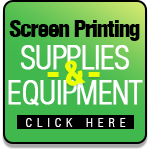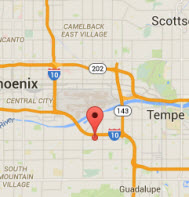Learn How To Screen Print With Catspit Productions, LLC
Pull Flood And Push Stroke Vs. Push Flood And Pull Stroke
The following is based on manual printing working with textile plastisol inks.
It is very interesting to see how much printers are split on this issue. I learned how to screen print in New York and I had never seen anyone pull their stroke before I moved to Arizona. At first I thought this was a simple case of west coast vs. east coast styles. But that is not the case and it seems this debate has been going on for some time. Only now has it become more an argument of efficiency and ergonomics rather than personal style or preference.
In the early years of my screen printing experiences I was limited to a small group of printers who basically came from a similar "school" of screen printing. As I went to college my exposure to different printing methods was expanded. I took many different types of printing classes throughout my college years but screen printing was always closest to me. It was here that I was being instructed to push my flood and pull my stroke.
I was surprised at this technique, because pulling your flood and pushing the stroke seemed so natural to me. The control you have over the ink is so much better. And the way the ink curls and rolls as you push the squeegee toward the print head just feels right. Not to mention pushing with your palms and controlling the angle of your squeegee this way also gives greater control of the ink.
Now I have tried both methods and there are certain print runs that just don't work out the best and I end up adapting my flood and stroke methods anyway. But there are definitely benefits to the pull flood and push stroke.
Pull Flood And Push Stroke:
Much more ink control in the ink well. Ink does not get all over the frame nor does it build up at your end of the screen.
I believe you can sheer the ink off better with this method giving better coverage and overall print results.
Using your palms to push is more efficient. It transfers force better.
You can control the amount of downward force by adjusting your squeegee angle. More of a right angle will force more ink through the mesh.
Your wrists and fingers will find this method much more comfortable over long print runs. Endurance is greater. You will not tire as easily and it does not abuse your wrists as much.
The angle of the squeegee against the screen causes the ink to roll toward the print head. With a quick movement of the squeegee handle up with a bit of down force at the end of the stroke will clear excess ink off of the blade and make it easy to rest the squeegee without carrying strings or clumps of ink all over the place.
Push Flood And Pull Stroke:
Ink gets all over the frame and builds up nearest printer making it necessary to pick up the ink with the squeegee and carry it back to the starting point or plainly pushing the ink back and flooding the screen stencil.
Flooding your stencil by pushing the ink toward the print head with the screen up, increases the possibility of flooding out the stencil completely thus ruining the next print. You have to be careful not to push too much ink into the stencil on your flood stroke.
This method is very abusive and damaging to the wrists and fingers. Arthritis and carpel tunnel syndrome are results of such abuse.
It looks messy and sloppy to others. To me, it almost makes the whole process look more haphazard than anything.
This style of printing makes it easy to get ink all over your product and shop.
Remember, there will be many who will want to argue with me about this and ultimately it comes down to what works best for YOU. I know I am among a minority of printers who prefer the pull flood and push stroke. Everyone is different and likes to work in their way. As far as the physical, endurance, and print quality benefits; I've heard that you can lead an animal to water but you can't make it drink. To each his own, as it were.
Manual screen printing is riddled with variables and it can often need some finesse. That is why I like to set everything up to start out, the same. I follow all of the same methods until an adaptation is demanded by other factors. Screen printing is first a technical skill and secondly an art.


 Screenprinting Equipment From Catspit Productions
Screenprinting Equipment From Catspit Productions


